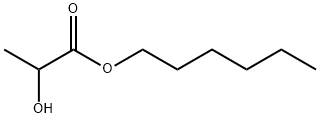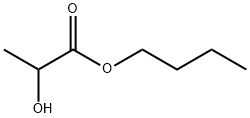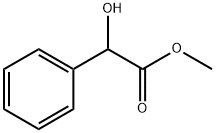CYCLANDELATE
- CAS NO.:456-59-7
- Empirical Formula: C17H24O3
- Molecular Weight: 276.37
- MDL number: MFCD00056623
- EINECS: 207-271-6
- SAFETY DATA SHEET (SDS)
- Update Date: 2025-12-23 21:30:31

What is CYCLANDELATE?
Absorption
Well absorbed following oral administration.
Toxicity
Acute oral toxicity (LD50): 3950 mg/kg [Guinea pig]
Description
Almond (Amygdalus communis L) is a kind of nut from Xinjiang, China. Traditional Chinese medicine believes that almond can promote blood circulation to dispel blood stasis, lubricate bowels to relieve constipation, and relieve cough and asthma. The indications include amenorrhea, fever, wind arthralgia, malaria, blood stasis and pain, injuries, and blood stasis with constipation.
Physical properties
Appearance: white or almost white amorphous powder, special smell, and bitter taste. Solubility: very soluble in ethanol or acetone and almost insoluble in water. Melting point: 50–62 °C.
Originator
Cyclospasmol,Ives,US,1958
History
The chemical synthesis of cyclandelate was first synthesized by Funcke et al. from Elan Corporation in Ireland using a-hydroxyphenylacetic acid and cis-3,3,5-cycloalkyl cyclohexanol. The raw material of mandelic acid was obtained by hydrolysis after benzaldehyde reacted to sodium cyanide. However, sodium cyanide is hypertoxic, and because of its unique structure of a-hydroxy acid, it is easy to decompose under the acid condition, which leads to more by-products and low yield. A series of improved methods have been developed, which can reduce the environmental pollution under the premise of ensuring the yield of Zn/HCOONH4/ C2H5OH system . The method was used to synthesize cyclandelate since then. However, this drug has not yet been approved by the Food and Drug Administration in the United States, Canada, and other countries because it easily causes white blood cell deficiency. It has been withdrawn from the market after drug approval in Japan, France, and other countries in the 1970s.
The Uses of CYCLANDELATE
vasodilator
Indications
Used in the treatment of various blood vessel diseases (e.g., claudication, arteriosclerosis and Raynaud's disease) and nighttime leg cramps.
Background
A direct-acting smooth muscle relaxant used to dilate blood vessels. It may cause gastrointestinal distress and tachycardia. Cyclandelate is not approved for use in the U.S. or Canada, but is approved in various European countries.
Definition
ChEBI: The ester obtained by formal condensation of mandelic acid and 3,3,5-tricyclohexanol. It is a direct-acting smooth muscle relaxant used to dilate blood vessels.
Indications
The indications of cyclandelate are arteriosclerosis obliterans, acrocyanosis, cerebral arteriosclerosis, cerebral insufficiency, cerebrovascular disease, brain trauma, and post-traumatic brain syndrome.
Manufacturing Process
50 g of dl-mandelic acid are heated for 6 hours at approximately 100°C with 50 g of 3,3,5-trimethylcyclohexanol (mixture of cis and trans isomers), while passing dry hydrochloric acid gas as a catalyst through the mixture. The reaction product is subsequently poured out into water. After neutralization with potassium bicarbonate the ester is extracted with ether. The ether extract is dried with sodium sulfate, the ether is distilled off and the residue is distilled in vacuo. The fraction, which has a boiling point of 192° to 194°C at 14 mm, consists of the 3,3,5-trimethylcyclohexyl ester of mandelic acid, which is obtained in a yield of about 70%. The liquid solidifies to a colorless solid substance having a melting point of 50° to 53°C, according to US Patent 2,707,193. It has been found that crude cyclandelate may be purified by the following procedure. Crude cyclandelate is dissolved in a solvent chosen for convenience from the class of saturated hydrocarbons. The crude cyclandelate solution is stirred for a suitable interval, typically 1 to 5 hours, with an aqueous solution of sodium borohydride (NaBH4) at temperatures ranging from 25° to 65°C. The preferred temperature range is 40° to 50°C. The pH of the solution may be adjusted to any desired level in the range between 2.5 to 11.5. The preferred pH range is 8.0 to 11.0 because at lower pH levels borohydride is unstable and decomposes rapidly. The amount of sodium borohydride used ranges from about 0.5 to 2.0 wt % of the amount of cyclandelate present. At the end of the stirring period cyclandelate is recovered by well-known procedures. For instance, the aqueous organic layers may be separated gravimetrically and the product organic layer washed with an appropriate solvent and then distilled, according to US Patent 3,663,597.
brand name
Cyclospasmol (Wyeth-Ayerst).
Therapeutic Function
Spasmolytic
World Health Organization (WHO)
Cyclandelate is a papaverine type spasmolytic and vasodilating drug intended for symptomatic treatment of various peripheral vascular disorders, such as intermittent claudication in arteriosclerosis obliterans as well as a treatment for cognitive dysfunction in patients suffering from senile dementia of the multi-infarct or Alzheimer's type. Cyclandelate remains registered in several countries.
Pharmacokinetics
Cyclandelate is in a class of drugs called vasodilators. Cyclandelate relaxes veins and arteries, which makes them wider and allows blood to pass through them more easily.
Pharmacology
The chemical structure and effect of cyclandelate are similar to papaverine. It can directly relax vascular smooth muscle and relieve the spasm of ileum and uterus smooth muscle induced by acetylcholine, histamine, and barium chloride in guinea pig. This effect is three to five times stronger than papaverine. Cyclandelate can also expand the cardiovascular, cerebrovascular, and renal blood vessels and limb peripheral vascular and coronary artery, increase blood flow, and promote blood circulation . It can also increase the tolerance to hypoxia, but the effect on human cerebral blood flow has not been confirmed. It was reported that cyclandelate can promote collateral circulation but has little effect on respiration, blood pressure, cardiac output, and myocardial oxygen consumption. It is safe for long-term administration .
Clinical Use
Cyclandelate can be used for clinical treatment of cerebral arteriosclerosis, cerebral vascular accident and its sequelae, post-traumatic brain syndrome, coronary arteriosclerosis, hypertensive heart disease, Raynaud’s disease, thromboangiitis obliterans, acrocyanosis, and Meniere’s disease .
Metabolism
Not Available
Properties of CYCLANDELATE
| Melting point: | 55.0-56.5° |
| Boiling point: | bp14 192-194° |
| Density | 1.0535 (rough estimate) |
| refractive index | 1.5490 (estimate) |
| storage temp. | Sealed in dry,Room Temperature |
| Water Solubility | Insoluble in water |
| solubility | Chloroform (Slightly), Methanol (Slightly, Sonicated) |
| pka | 12.13±0.20(Predicted) |
| form | powder to crystal |
| color | White to Almost white |
| Merck | 14,2704 |
| EPA Substance Registry System | Benzeneacetic acid, .alpha.-hydroxy-, 3,3,5-trimethylcyclohexyl ester (456-59-7) |
Safety information for CYCLANDELATE
Computed Descriptors for CYCLANDELATE
New Products
4,4-Difluoropiperidine hydrochloride tert-butyl 9-methoxy-3-azaspiro[5.5]undecane-3-carboxylate Indole Methyl Resin N-Isopropylurea N,N-Dicyclohexylcarbodiimide(DCC) MELDRUMS ACID 5-METHYLISOXAZOLE-4-CARBOXYLIC ACID Magnessium Bis glycinate Zinc ascorbate 1-bromo-2-butyne 2-acetamidophenol 9(10H)-anthracenone Erythrosin B, 4-Piperidinopiperidine 2-((4-morpholinophenylamino) (methylthio) methylene) malononitrile 2,4-dihydroxybenzaldehyde 3-(4-morpholinophenylamino)-5-amino-1H-pyrazole-4-carbonitrile Methyl 2-methylquinoline-6-carboxylate 2,6-dichloro-4-nitropyridine 4-Bromo-2-chlorobenzonitrile 2-(benzylamino)acetic acid hydrochloride 4-(tert-Butoxycarbonylamino)but- 2-ynoic acid 3,4-dihydro-2H-benzo[b][1,4]dioxepine 1-Phenyl-1-cycloprppanecarboxylicacidRelated products of tetrahydrofuran








You may like
-
 Cyclandelate (mixture of isomers) CAS 456-59-7View Details
Cyclandelate (mixture of isomers) CAS 456-59-7View Details
456-59-7 -
 Cyclandelate 95% CAS 456-59-7View Details
Cyclandelate 95% CAS 456-59-7View Details
456-59-7 -
 3-(4-amino-1-oxoisoindolin-2-yl)-1-methylpiperidine-2,6-dione 98%View Details
3-(4-amino-1-oxoisoindolin-2-yl)-1-methylpiperidine-2,6-dione 98%View Details -
 614-19-7 98%View Details
614-19-7 98%View Details
614-19-7 -
 20677-73-0 (2,2-diethoxyethyl)methylamine 98%View Details
20677-73-0 (2,2-diethoxyethyl)methylamine 98%View Details
20677-73-0 -
 3-(4-(hydroxyamino)-1-oxoisoindolin-2-yl)piperidine-2,6-dione 98%View Details
3-(4-(hydroxyamino)-1-oxoisoindolin-2-yl)piperidine-2,6-dione 98%View Details -
 57381-49-4 2-bromo-4-chlorobenzonitrile 98%View Details
57381-49-4 2-bromo-4-chlorobenzonitrile 98%View Details
57381-49-4 -
 4,6-dichloropyrimidine-5-carbaldehyde 98%View Details
4,6-dichloropyrimidine-5-carbaldehyde 98%View Details
5305-40-8
